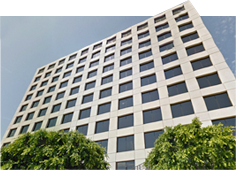H-1B Filing Season is Here
Starting April 1, 2016, the U.S. Citizenship and Immigration Service (USCIS) will begin accepting cap-subject filings in the H-1B classification. The April 1, 2016 filings are for employment starting on the first of the upcoming fiscal year—October 1, 2016.
As in recent years, it is expected that the cap will be exhausted within the first week of filing. Therefore, H-1B petitions should be filed on or very near April 1, 2016 for a chance at acceptance under the cap. Last year, the annual cap was exceeded in the first week of April and a lottery was conducted by USCIS to determine which petitions would be considered.
With early February upon us, smart employers and H-1B beneficiaries are beginning their case preparations now, to avoid the “March Madness” rush.
What is the H-1B Cap?
U.S. immigration law provides for an annual limit of 65,000 cap-subject H-1Bs issued per year to temporary workers. Additionally, there is an exemption from the 65,000 annual quota that is available to the first 20,000 H1B petitions filed each fiscal year for beneficiaries who have been granted masters’ or higher degrees by U.S. institutions of higher education. H-1B workers who are or have been in H-1B status within the previous six years are not subject to the cap, nor are workers petitioned by cap exempt organizations. Cap exempt organizations include certain higher education institutions, certain related non-profits and some research organizations.
Qualifying for an H-1B
The H-1B is a specialty occupation work visa, meaning the proposed employment must generally require a Bachelor’s degree or its equivalent as a minimum entry requirement for the position. The beneficiary generally must have obtained the Bachelor’s or its foreign equivalent in order to qualify for the H-1B visa. If granted, H-1B status will allow the employee to work in H-1B status in two three-year increments, with further extensions possible for employees undergoing employment-based Green Card sponsorship. H-1B employment may be either full or part-time, with authorization working for two qualifying part-time employers also possible.
What is the Process for Applying for an H-1B?
First, the employer must obtain an approval of a Labor Condition Application from the U.S. Department of Labor (DOL). In submitting the LCA, the employer attests that the beneficiary will receive a wage and working conditions that are the same or more valuable than those provided to U.S. workers, that other workers have been notified of the submission of the LCA to DOL, and that that there exists no strike or lockout of other employees. (For more on LCA and employer compliance requirements click here.)
Second, the employer must obtain H-1B petition approval from USCIS. Information contained in the petition includes the specifics of the proposed job offer, the employer’s business and the beneficiary’s academic (and sometimes work) qualifications. The approved LCA and supporting documentation is submitted concurrently with the H-1B petition. The petition decision will generally take about 3-6 months, but 15-day “premium processing” can be requested from USCIS in exchange for a surcharge of $1225.
Finally, for beneficiaries lawfully in the U.S., a change of status (such as from H-4 dependent or F-1 student) takes effect on October 1st, permitting the individual to continue their stay in the U.S. uninterrupted. Beneficiary workers outside of the U.S. will need to undergo the additional step of H-1B visa issuance at a U.S. embassy or consulate abroad.
Conclusion
The U.S. economy is in an upswing and more and more talented professionals are sought by U.S. companies to bolster their competitive edge. As early as last December, our Law Firm has been contacted by workers and employers seeking advice and assistance with evaluating and preparing their H-1B filings. We are left with little doubt that the 2016 annual cap will again be exceeded in the first week of April. Prudent employers and beneficiaries are seeking the assistance of a Knowledgeable Immigration Lawyer now, to ensure a proper and timely filing. Further information regarding the H-1B classification is available here.






